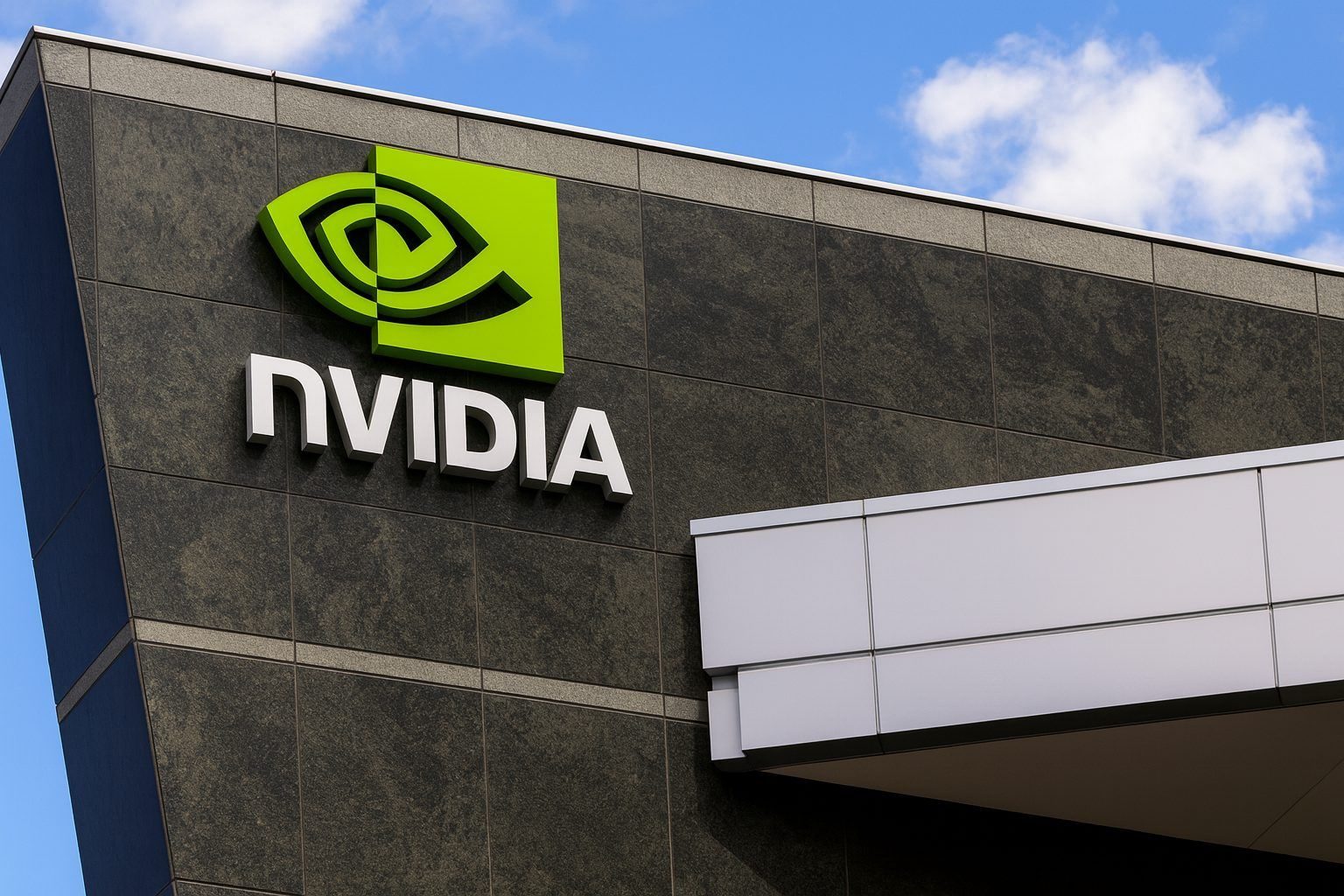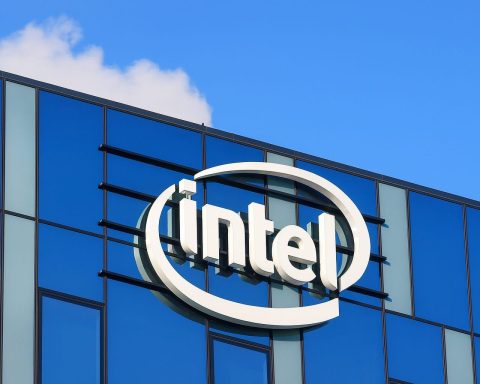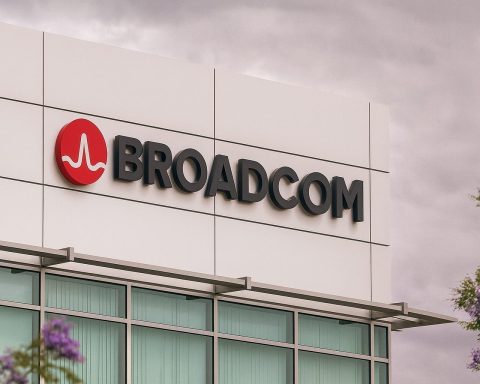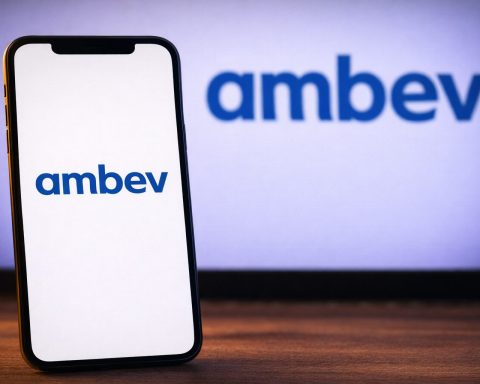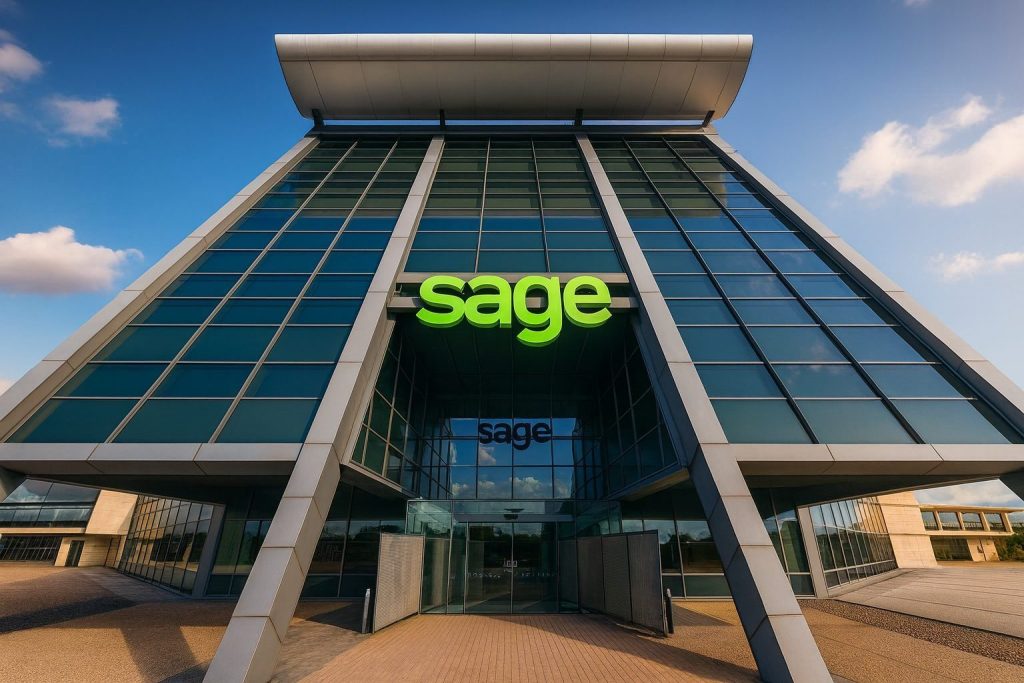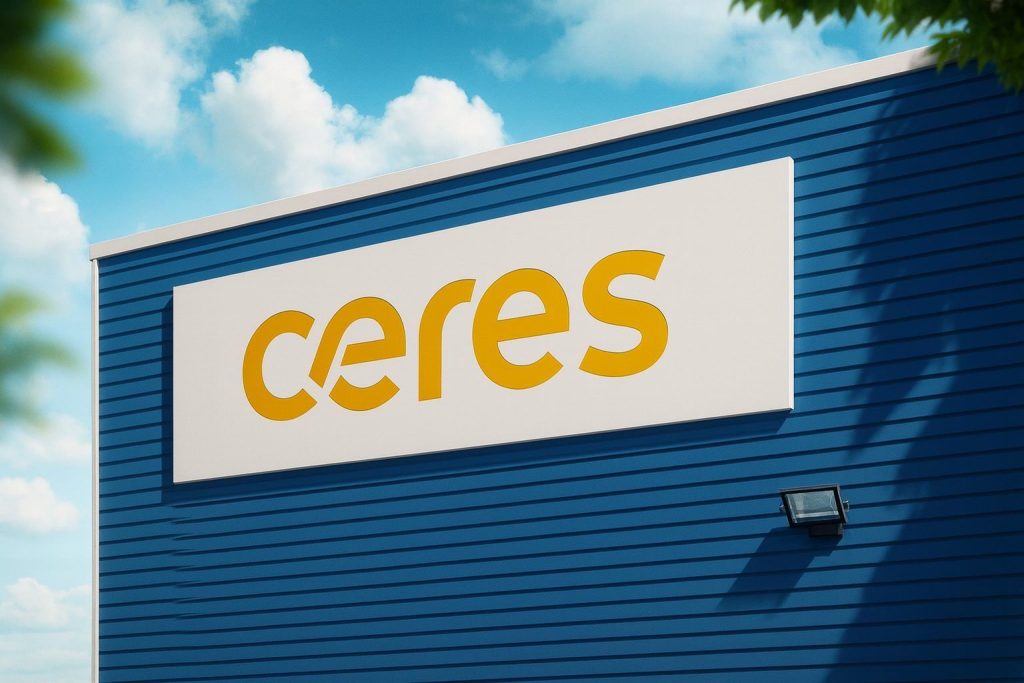U.S. markets are closed today for Thanksgiving, but NVIDIA Corporation (NASDAQ: NVDA) will be back in the spotlight when trading resumes on Friday, November 28, 2025—a shortened Black Friday session that ends at 1 p.m. Eastern Time. [1]
As of Wednesday’s close (November 26), NVIDIA shares finished at $180.26, about 15% below their 52‑week high near $212 and roughly 13% off their recent peak that briefly pushed the company’s market value to $5 trillion, the first in history. [2]
At the same time, NVIDIA still carries a market cap around $4.5 trillion, keeping it the world’s most valuable public company for now. [3]
Here’s a deep dive into what’s driving NVDA right now, the latest headlines, and the key issues to watch before Friday’s opening bell.
1. Stock Snapshot Heading Into the November 28 Open
- Last close (Nov. 26, 2025): $180.26 [4]
- 52‑week range: roughly $86.6 – $212.2 (NVDA is about 15% below its high). [5]
- Valuation: Several data providers put NVIDIA’s trailing P/E in the mid‑40s and forward P/E anywhere from the low‑20s to high‑30s, depending on earnings estimates—well above typical semiconductor peers. [6]
- Recent performance: Barron’s estimates the stock is down about 13% over the past month, as investors fret about lofty AI valuations and rising competition. [7]
Despite the pullback, Wall Street remains broadly bullish. According to FactSet data cited by Barron’s, 61 of 66 analysts rate NVIDIA a “Buy,” with a consensus price target around $254—roughly 40% above Wednesday’s close. [8]
2. Record‑Breaking Q3 Results Still Define the Fundamental Story
NVIDIA’s latest earnings report—fiscal Q3 2026, released November 19—set the fundamental backdrop for everything happening in the stock right now. [9]
Key numbers from the company’s official release:
- Total revenue: $57.0 billion
- Up 22% quarter‑over‑quarter and 62% year‑over‑year
- Data Center revenue: $51.2 billion
- Up 25% QoQ and 66% YoY
- GAAP EPS: $1.30 per diluted share (also $1.30 on a non‑GAAP basis)
- GAAP gross margin: 73.4%
- Q4 FY26 revenue guidance:$65 billion ± 2%—implying another sizable sequential jump [10]
CEO Jensen Huang said demand for the company’s Blackwell AI platform and cloud GPUs is essentially outstripping supply, with NVIDIA entering what he called a “virtuous cycle” of AI adoption. [11]
Independent analysis reinforces how extraordinary those numbers are:
- A recent Seeking Alpha review notes Data Center revenue alone reached $51.2B and highlights net margins above 50% and return on capital over 100%, far exceeding industry averages. [12]
- Another analysis estimates NVIDIA has visibility into roughly $500 billion in cumulative Blackwell and Rubin GPU revenue through 2026, underscoring a massive order backlog. [13]
Why it matters for Friday:
Even after the recent pullback, NVIDIA’s growth profile is still extraordinary. The question for tomorrow’s session isn’t whether the business is strong—it’s whether investors are comfortable paying premium multiples for that growth amid political risk and mounting competition.
3. A Valuation Lightning Rod: Michael Burry vs. NVIDIA’s Memo
The latest volatility in NVDA isn’t just about fundamentals; it’s also about narrative and sentiment.
Michael Burry’s criticism
Investor Michael Burry—famous from “The Big Short”—has become one of the most vocal skeptics of NVIDIA and the broader AI trade:
- Burry has publicly argued that NVIDIA’s stock‑based compensation and buyback program have eroded “owner’s earnings,” and he has questioned the sustainability of the AI boom. [14]
- Some trading commentary notes that NVIDIA shares are down roughly mid‑teens percent since Burry publicly turned bearish, though that’s largely a reflection of the broader AI‑stock cool‑down and profit‑taking after the $5 trillion milestone. [15]
NVIDIA’s unusually direct response
In a rare move, NVIDIA responded directly to Burry in a memo sent to a Wall Street analyst and later reported by Business Insider and Reuters. [16]
According to that reporting, the memo:
- Explicitly named Burry and corrected his claim that NVIDIA repurchased $112.5B of stock, saying the figure was $91B since 2018 and that he mistakenly included RSU‑related taxes. [17]
- Argued that employee equity grants shouldn’t be conflated with buyback performance and that its compensation is in line with peers. [18]
- Rejected comparisons to historical frauds like Enron and WorldCom, stressing that NVIDIA’s business is “economically sound,” its reporting is complete, and that it takes its reputation for integrity seriously. [19]
- Downplayed concerns about so‑called “circular financing” between NVIDIA and AI startups, saying those investments make up only a small fraction of its revenue and are primarily supported by third‑party customer demand. [20]
Why it matters for Friday:
The memo underlines how sensitive management is to valuation skepticism. For traders, the clash highlights a core tension:
- Bull case: A still‑explosive AI infrastructure cycle, huge backlog, world‑leading margins. [21]
- Bear case: A stock still trading at mid‑40s trailing P/E, over 20x sales, and ~37x book by some estimates, leaving little room for disappointment if growth slows. [22]
Expect sentiment around that memo—and any fresh commentary or social‑media reaction—to remain an undercurrent in Friday’s trading.
4. Google, Meta and the AI Chip Competition Narrative
Another major driver of the recent sell‑off has been fear that big cloud customers may diversify away from NVIDIA’s GPUs.
The Google–Meta chip story
Multiple outlets report that:
- Google is in talks with Meta Platforms about supplying its custom TPU AI chips for Meta’s data centers starting around 2027, potentially grabbing a slice of spending that might otherwise go to NVIDIA. [23]
- One analysis estimated that if Google were to sell its TPUs more broadly, it could eventually threaten up to about 10% of NVIDIA’s annual revenue, though that remains speculative. [24]
- On the day this news broke, NVIDIA stock fell roughly 2–3%, reflecting concern that hyperscalers are increasingly serious about in‑house or alternative accelerators. [25]
NVIDIA’s public counter‑message
NVIDIA responded very publicly, posting a statement on X (formerly Twitter) and repeating that it remains “a generation ahead of the industry” and is the only platform that runs every major AI model across all kinds of compute environments. [26]
Importantly:
- NVIDIA also emphasized that it still supplies chips to Google and that it is “delighted by Google’s success,” framing the relationship as co‑operative, not zero‑sum. [27]
- Google, for its part, said it sees accelerating demand for both its custom TPUs and NVIDIA GPUs, and remains committed to supporting both. [28]
Why it matters for Friday:
Tomorrow’s session will continue to price in the long‑term risk that hyperscalers reduce their reliance on NVIDIA, even while NVIDIA’s software stack (CUDA, libraries, tools), ecosystem, and early Blackwell demand remain powerful moats. Short‑term, the financial hit from any Google–Meta TPU deal wouldn’t appear until late this decade—but the narrative of rising competition is already moving the stock.
5. China and AI Chip Export Policy: From Crackdowns to Possible Easing
Perhaps the biggest wild card for NVIDIA heading into 2026 is U.S.–China tech policy and how it affects high‑end GPU exports.
Chinese demand hasn’t gone away—just moved
A fresh Reuters summary of a Financial Times report says Chinese tech giants including Alibaba and ByteDance are increasingly training AI models in overseas data centers, particularly in Southeast Asia, to maintain access to NVIDIA‑class chips despite U.S. export controls. [29]
In parallel, U.S. authorities just charged four individuals with conspiring to illegally export NVIDIA A100 GPUs to China via Malaysia and Thailand—highlighting the existence of a black market for advanced AI chips and the government’s willingness to prosecute violations. [30]
These developments show that underlying Chinese demand for NVIDIA hardware remains strong, even when official channels are restricted.
Trump administration weighing (and possibly easing) H200 exports
Policy is now in flux:
- Reuters reports that President Donald Trump is weighing whether to allow NVIDIA to sell its high‑end H200 AI chips to China, with Commerce Secretary Howard Lutnick saying the decision is on the president’s desk and that he is consulting “lots of different advisers.” [31]
- An article distributed via Nasdaq notes that loosening these restrictions could be a major win for NVIDIA, enabling it to tap more of a Chinese AI chip market that could potentially reach $200 billion by 2030, though the move is facing political pushback. [32]
- A policy‑focused report from Roic.ai goes even further, arguing that the administration has already reversed parts of the export ban, letting NVIDIA resume sales of its H20 and potentially H200 GPUs to Chinese customers as part of a broader “Busan Declaration” tech détente with Beijing. [33]
These narratives aren’t perfectly aligned—major wire services still emphasize that export decisions for the H200 are under consideration—but together they underscore that Washington’s stance is softening from the strict Biden‑era rules rather than tightening further.
White House vs. Congress: The GAIN AI Act
Regulation is also now being fought on Capitol Hill:
- Axios reports that key White House officials are actively lobbying to keep the “GAIN AI Act” out of the annual defense bill. [34]
- The bill would force chipmakers to prioritize U.S. customers before exporting to “countries of concern” like China and add licensing constraints—rules that would significantly complicate NVIDIA’s ability to serve overseas demand. [35]
- Axios notes that the White House pushback, led by AI policy advisers and the legislative affairs office, makes it unlikely the bill will be included, which would be a clear positive for NVIDIA. [36]
Why it matters for Friday:
Headlines or leaks about H200 export decisions, the defense bill, or new enforcement actions can move NVDA quickly. Traders heading into the Black Friday session will be watching for:
- Any signs that export policy is definitively easing, which would expand NVIDIA’s addressable market.
- Or, conversely, indications that Congress may still clamp down, limiting upside from China.
6. Long‑Term AI Demand: Blackwell, Rubin and Global Partnerships
Even with policy risk and competition, NVIDIA’s execution and roadmap remain the core of the bull case.
From the Q3 press release and related announcements: [37]
- Blackwell GPUs are now in volume production and already sold out at many hyperscalers, according to both NVIDIA and multiple analyst notes. [38]
- NVIDIA announced:
- A strategic partnership with OpenAI to deploy at least 10 gigawatts of NVIDIA systems for next‑gen AI infrastructure. [39]
- Collaborations with Google Cloud, Microsoft, Oracle, and xAI to build large AI data centers using hundreds of thousands of GPUs. [40]
- New projects with Anthropic, adopting NVIDIA Grace Blackwell and Rubin‑class systems, and large sovereign and regional AI initiatives in the U.K., Germany and South Korea. [41]
- NVIDIA is already talking publicly about its next architecture, Rubin, and analysts estimate a 12–18 month cadence for new GPU generations, which underpins more aggressive revenue projections (including scenarios where NVIDIA could justify multi‑trillion‑dollar market caps by 2030 if growth holds). [42]
Why it matters for Friday:
For long‑term‑oriented investors, any further pullback driven by short‑term policy or competitive headlines may be viewed relative to:
- A still‑huge AI infrastructure build‑out
- A rapidly evolving product roadmap
- And a deepening moat in software, developer tools, and complete systems—not just chips
Short‑term traders, however, may focus more on whether expectations are already too high, given how quickly NVIDIA grew into a $5 trillion company.
7. How Expensive Is NVIDIA Really? Valuation Snapshots
A few datapoints investors will likely keep in mind before Friday’s open:
- Trailing P/E: Around 44–47x based on a roughly $180 share price and trailing EPS just above $4, per multiple valuation trackers. [43]
- Forward P/E: Depending on whose earnings estimates you use, forward P/E ranges from the low‑20s to high‑30s, still well above the semiconductor industry median but lower than many high‑growth software names. [44]
- Price‑to‑sales and price‑to‑book: One Seeking Alpha analysis pegs NVIDIA at about 24x sales and 37x book, warning of “heightened correction risk” if revenue growth slows or margins compress. [45]
- Fair‑value models: Discounted cash‑flow estimates vary. Some, like Simply Wall St and other DCF‑driven services, suggest NVIDIA is near fairly valued or modestly overvalued, while more aggressive models see upside toward $300+ per share over several years. [46]
Key takeaway:
Even after a notable pullback, NVIDIA is not “cheap” by traditional metrics. Bulls argue that unique growth, margins, and competitive position justify these multiples. Bears counter that any slowdown in AI capex, competitive loss of share, or political shock could trigger a deeper de‑rating.
8. 5 Things to Watch Before Friday’s Opening Bell
Here are the practical catalysts to keep an eye on heading into the November 28 session:
1. Any overnight headlines on H200 exports or the GAIN AI Act
A single Reuters or Axios alert about China chip exports or defense‑bill negotiations can change sentiment quickly. A clear move toward allowing more H200 sales to China would likely be taken as bullish, while renewed talk of tighter controls could weigh on the stock. [47]
2. Follow‑through from the memo vs. Burry narrative
Watch financial media and social channels for further reaction to NVIDIA’s memo. If large funds or high‑profile investors publicly side with Burry’s skepticism, that could add selling pressure. If, instead, the memo reassures institutions, the stock could stabilize. [48]
3. Ongoing coverage of Google and custom AI chips
Expect more analysis of the Google–Meta TPU story and broader hyperscaler strategies. Any fresh signs that Google, Microsoft, Amazon, or Meta are ramping their own accelerators faster than expected may keep a lid on NVIDIA’s multiple—even if near‑term earnings stay strong. [49]
4. Macro and tech‑sector risk appetite
NVIDIA is a bellwether for the AI trade and the broader tech complex. If Friday’s shortened session sees:
- Strong buying in other AI and chip names (e.g., AMD, TSMC, Broadcom), that could support NVDA.
- Or another round of profit‑taking in richly valued tech, NVIDIA may continue to trade like a high‑beta proxy for risk sentiment. [50]
5. Liquidity and volatility in a half‑day session
With the NYSE and Nasdaq closing at 1 p.m. ET on Black Friday, volumes are typically lighter and moves can be exaggerated in either direction. Day traders often target highly liquid names like NVDA in these shortened sessions, which can amplify intraday swings. [51]
9. Bottom Line: A Battle Between Relentless Growth and Relentless Expectations
Heading into the November 28, 2025 open, NVIDIA sits at the intersection of:
- Extraordinary fundamentals: Record Q3 revenue, enormous data‑center growth, sold‑out next‑gen products, and a still‑expanding global AI ecosystem. [52]
- Intense scrutiny: A premium valuation, a very public clash with Michael Burry, concerns about an AI “bubble,” and questions about how much hyperscalers and regulators will let NVIDIA dominate the AI stack. [53]
For long‑term investors, Friday’s moves will likely be just another data point in a multiyear AI build‑out story.
For short‑term traders, the combination of policy headlines, competitive newsflow, and a half‑day session could mean sharp intraday swings.
Either way, if you’re considering trading or investing in NVDA:
- Make sure you understand the policy risk around China,
- Have a view on how durable NVIDIA’s AI hardware and software moat really is,
- And be honest about your comfort level with high‑growth, high‑multiple stocks in a market that’s already priced in a lot of AI optimism.
This article is for informational purposes only and is not financial or investment advice. Always do your own research and consider speaking with a qualified financial advisor before making investment decisions.
References
1. www.nyse.com, 2. www.macrotrends.net, 3. www.reuters.com, 4. www.macrotrends.net, 5. www.macrotrends.net, 6. fullratio.com, 7. www.barrons.com, 8. www.barrons.com, 9. nvidianews.nvidia.com, 10. investor.nvidia.com, 11. investor.nvidia.com, 12. seekingalpha.com, 13. seekingalpha.com, 14. www.businessinsider.com, 15. 99bitcoins.com, 16. www.businessinsider.com, 17. www.businessinsider.com, 18. www.businessinsider.com, 19. www.businessinsider.com, 20. www.businessinsider.com, 21. investor.nvidia.com, 22. seekingalpha.com, 23. coincentral.com, 24. coincentral.com, 25. coincentral.com, 26. www.businessinsider.com, 27. www.businessinsider.com, 28. www.businessinsider.com, 29. www.reuters.com, 30. www.worldecr.com, 31. www.reuters.com, 32. www.nasdaq.com, 33. www.roic.ai, 34. www.axios.com, 35. www.axios.com, 36. www.axios.com, 37. investor.nvidia.com, 38. investor.nvidia.com, 39. investor.nvidia.com, 40. investor.nvidia.com, 41. investor.nvidia.com, 42. seekingalpha.com, 43. fullratio.com, 44. www.gurufocus.com, 45. seekingalpha.com, 46. simplywall.st, 47. www.reuters.com, 48. www.reuters.com, 49. coincentral.com, 50. www.investopedia.com, 51. www.nyse.com, 52. investor.nvidia.com, 53. www.reuters.com
